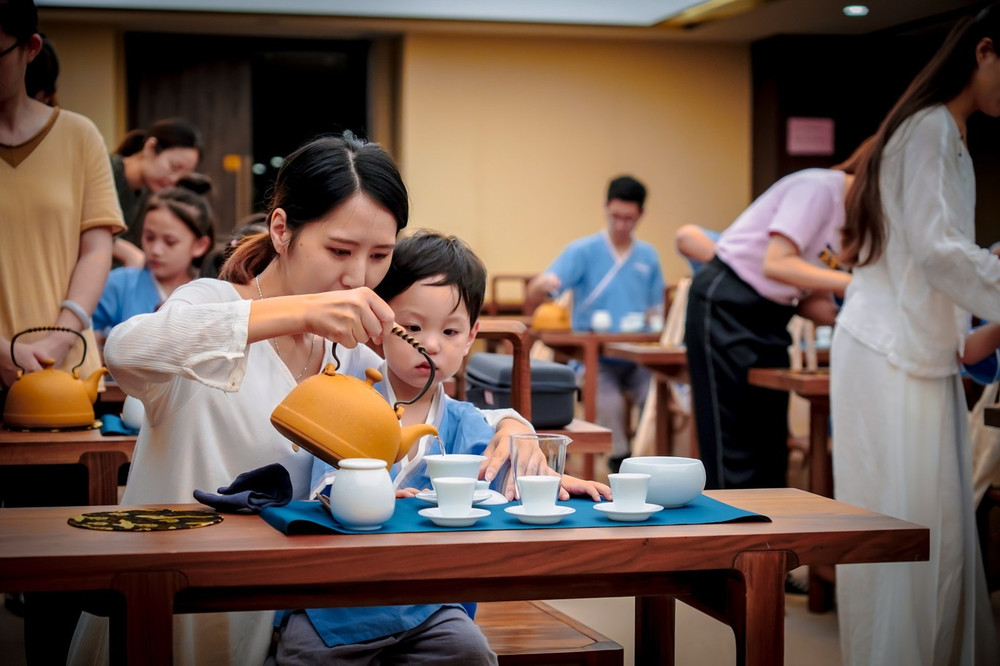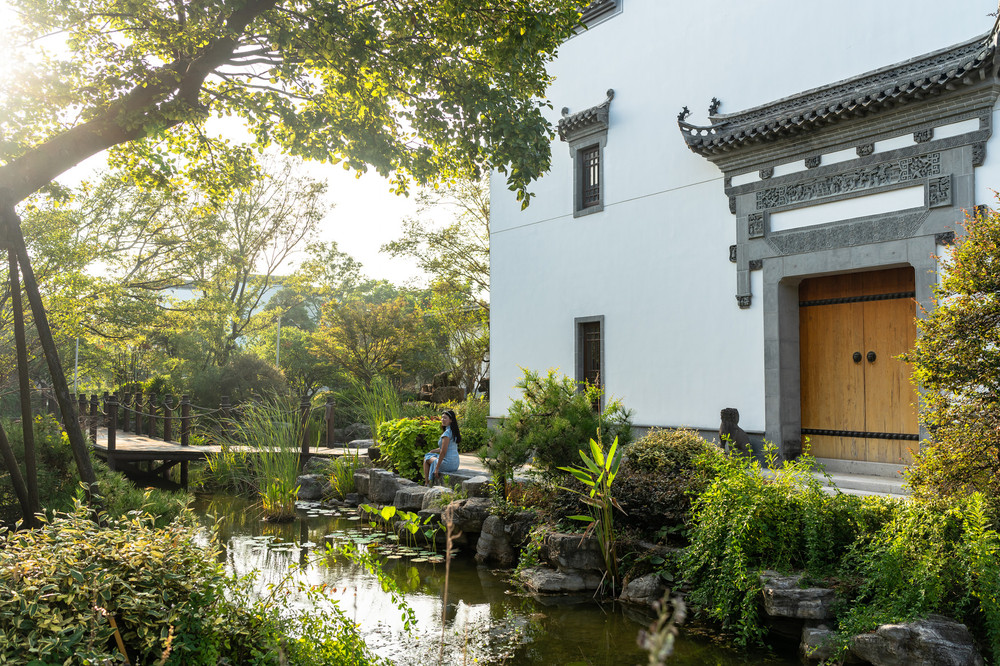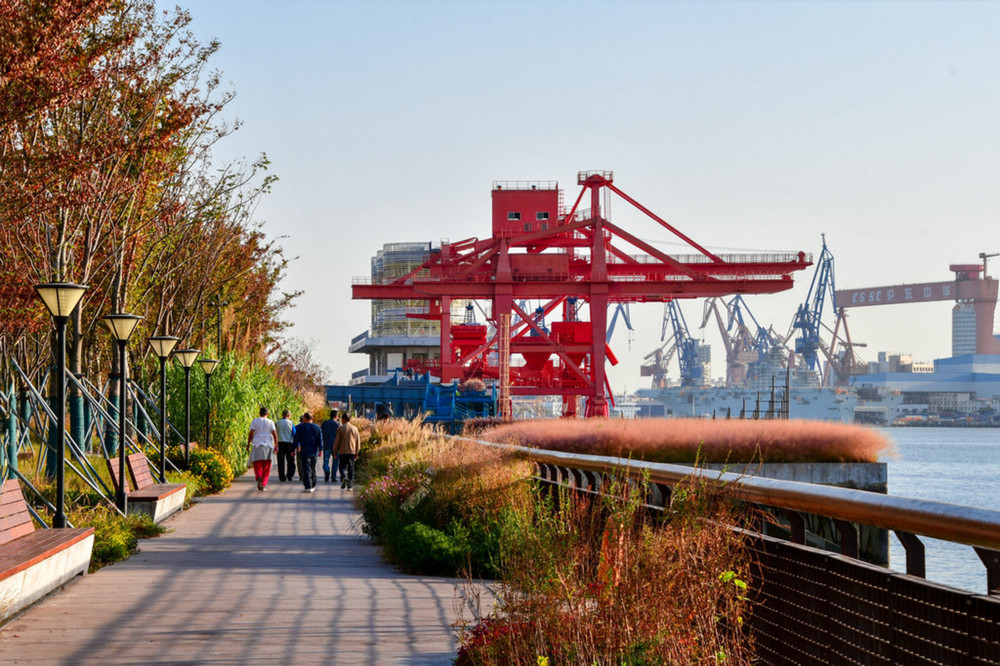Understanding of Shanghai Food
Benbang Cuisine, also known as the local cuisine of Shanghai Restaurant, dates back to the Qing and Ming dynasties. The local food of humble peasants is very popular. It is distinct for its slightly sugary taste and red-braising technique using local Shaoxing rice wine with herbs and Zhejiang vinegar as marinade, which infuses flavor and color to the dish. Whether it’s the thick sauced caramelized and braised fatty pork belly, distinct soup dumplings, fresh vegetables, or just-caught sea fare like Crystal shrimp and Hairy crab, the influence of Benbang Cuisine and its ingredients from eastern Zhejiang Province shows in Shanghai’s cooking style and ingredients used.
Typical Benbang dishes at a Shanghai Restaurant are Hóngshāo ròu (Red-Braised Pork Belly), which contains thick soy sauce, Shaoxing wine, and sugar in the marinade and is braised slowly, often with tofu, quail eggs, or more fatty pork added. Another is Xiǎo lóng bāo (Shanghai Soup Dumplings) and Bā bǎo làjiàng (Spicy Eight-treasure), full of eight lucky ingredients like pork, diced vegetables, garlic, tofu, and peanuts stir-fried with sugar, bean-paste, sesame oil, and wine.
Haipai Cuisine is equally influential and an ‘all-embracing cuisine’ style popular in Shanghai’s cooking scenario. In the early 1900s, after China lost the First Opium War, the Shanghai port was opened up to foreign trading activity. In the 1920s and 1930s, Shanghai was even called the Pearl of the Orient.
Food in Shanghai is important to both locals and tourists. Shanghai Restaurant and Shanghai-style food draw inspiration from the diverse regional cuisines in China. The Haipai and Benbang cuisines are integral parts of Shanghai’s “Hu” cuisine, followed by an authentic Shanghai Restaurant. The rise of Shanghai and especially its foods has been rapid. It came into its own only in the 1800s. We will take you on a guided tour of Shanghai’s cuisine, the best typical-Shanghai dishes to try, where to find the best Shanghai Chinese Restaurant, the various popular cuisines and where they are served, and lead you to the best dating restaurants to try out. Are you hungry enough? The advice is for free!
Understanding of Shanghai Food
Benbang Cuisine, also known as the local cuisine of Shanghai Restaurant, dates back to the Qing and Ming dynasties. The local peasant food is popular for its slightly sweet taste and red-braising technique using local Shaoxing rice wine, herbs, and Zhejiang vinegar. Dishes like thick sauced caramelized and braised fatty pork belly, distinct soup dumplings, fresh vegetables, and sea fare like Crystal shrimp and Hairy crab show the influence of Benbang Cuisine and its ingredients from eastern Zhejiang Province on Shanghai’s cooking style and ingredients. Typical Benbang dishes at a Shanghai Restaurant include Red-Braised Pork Belly (Hóngshāo ròu), which contains thick soy sauce, Shaoxing wine, sugar, and can be braised with tofu, quail eggs, or more fatty pork. There are also Shanghai Soup Dumplings (Xiǎo lóng bāo) and Spicy Eight-treasure (Bā bǎo làjiàng), filled with ingredients like pork, diced vegetables, garlic, tofu, peanuts, stir-fried with sugar, bean-paste, sesame oil, and wine.
Haipai Cuisine is equally influential and an ‘all-embracing cuisine’ style popular in Shanghai’s cooking scenario. In the early 1900s, after China lost the First Opium War, the Shanghai port was opened up to foreign trading activity. In the 1920s and 1930s, Shanghai was even called the Pearl of the Orient.
Food in Shanghai is important for both locals and tourists. The Shanghai Restaurant and Shanghai-style food draw inspiration from the diverse regional cuisines in China. The Haipai and Benbang cuisines are integral parts of Shanghai’s “Hu” cuisine, followed by an authentic Shanghai Restaurant. The rise of Shanghai and its foods has been rapid, and it came into its own only in the 1800s. We will take you on a guided tour of Shanghai’s cuisine, the best typical-Shanghai dishes to try, where to find the best Shanghai Chinese Restaurant, the various popular cuisines and where they are served, and even lead you to the best dating restaurants to try out. Are you hungry enough? The advice is for free!
Later around 1943 and after the 1843 Nanjing Treaty, the foreign-ruled settlements witnessed the beginnings of a fusion-styled Shanghai culture and food habits. Hǎipài cài foods combine western dishes like pork chops, potato salad, or borscht with a Chinese traditional Benbang twist. During the communist period, Haipai cuisine was frowned upon but revived later by younger experimenting chefs. Typical Haipai dishes include Luó sòng tāng (Chinese borscht inspired by Russian-style borscht with beef, tender carrots, and celery), Zhà zhūpái (Shanghai-style fried pork chops similar to German schnitzel marinated in Benbang style and served with spicy tonkatsu sauce), and Tǔdòu shālā (Shanghai-style potato salad inspired by European Russian potato salad with peas, hard-boiled eggs, and diced sausage, served cold as an appetizer).
Recommendation of Shanghai Snacks:
1. Taoyuan Village: In 1949, Mao’s forces won, and the Kuomintang nationalist army retreated to Taiwan’s juàncūn military and housing villages. They took their culinary skills to Taiwan and created juàncūn cài (Military Village Cuisine) with dishes like zhajiang noodles, stir-fried bacon, and beef noodle soup. At Taoyuan Village, breakfast features Taiwanese juàncūn cài with dishes like dòujiāng soy milk, fàntuán stuffed rice balls, shāobǐng flaky flatbread, and yóutiáo Chinese crullers. Slightly higher priced than street vendors, it’s for those who enjoy a hearty, late lazy breakfast. The freshly made breakfast in the well-designed bright interiors with free wi-fi is worth the wait. Taoyuan is open until 2:30 am. Its six locations have different addresses and numbers. The popular ones are at 405-Taizhou Lu (tel: 86*21*6277*7917), 67-Xingfu Lu (tel: 86*21*5273*0107), and 1/F, SMS Plaza, 618-Xujiahui Lu (tel: 86*21*3159*3557). The menu is in Chinese.
2. Yang’s Fry Dumpling (Fried Pork Buns): Have you tried the shēngjiān (fried dumplings) with sesame and scallion coating at Yang’s Fry Dumpling? Look at the long queues. Served in little yellowish and orange-brown bowls straight from the fire, a set of four liǎng dumplings costs 20. You can also try the traditional dish with coriander and duck blood soup. Service is simple. Pay at the left counter and pick up the hot order from the right counter. We suggest asking for 8 dumplings with tāng soup. They are located at 97 Huanghe Rd and open from 6.30 am to 8 pm.
Discover the rich culinary landscape of Shanghai with our guide to local restaurants and must-try dishes.
3. Nanjing Impressions: Renowned for its duck specialties, Nanjing Impressions offers a true taste of Nanjing-style cuisine in Shanghai. Don’t miss their saltwater duck, duck meat dumplings, and jiangmi kourou, the ‘lion’s head’ meatball. For a more casual bite, indulge in stall noodles, pancakes, and a variety of sweets and delicacies. Located at 4/F, Shimao Dept. Store Complex, 13-Gongti Beilu, Chaoyang District, the restaurant operates from 11 am to 2 pm and 5 pm to 9:30 pm on weekdays, and 11 am to 10 pm on weekends. Cash-only and smoke-free, it’s an affordable dining option with a price tag starting at CNY 48.
Top Best Shanghai Dishes You Cannot Miss: Embark on a gastronomic journey through Shanghai’s finest dishes.
1. Xiaolongbao: Known as ‘little-basket-buns,’ these thin-skinned soup dumplings are a Shanghai classic. Filled with a variety of ingredients such as vegetables, pork, crab meat, or shrimps, they are served in bamboo baskets, a perfect take-home souvenir. Enjoy them with a dip in vinegar and soy sauce at Din Tai Fung chain or Jia Jia Tang Bao Restaurant at 90 Huanghe Road, Huangpu. At just CNY 20, it’s a steal.
2. Steamed Crab Dàzháxiè: This seasonal delicacy is best enjoyed during the lunar year’s 9th and 10th months. Hairy crabs, known for their soft shells, are steamed with ginger and vinegar in bamboo steamers. The debate over whether to eat male or female crabs is a local affair. Xinguang Jiu Jia, located at 512, Tianjin Lu, is the go-to spot for this dish, priced at CNY 300 to 400 per person.
3. Peking Duck: Despite its name, Peking duck is a beloved Shanghai dish, characterized by its crispy red skin and tender meat. Roasted over an open fire after marination, it’s served with bean paste, steamed pancakes, and scallions. Da Dong Roast Duck, within the IAPM Mall at 999 Huaihai Middle Road, offers this dish for around CNY 300 for a whole duck.
Shanghai is renowned for its diverse food scene, boasting nearly 1,800 snack stalls offering a vast array of popular local snacks and foods. For breakfast, you can indulge in pastries and dumplings with over 300 varieties, often accompanied by soy milk, deep-fried dough sticks, glutinous rice, and other traditional breakfast items.
Shanghai’s restaurant snacks are known for their unique shapes, fillings, and flavors. Delights such as date-paste cake, eyebrow-shaped shortcake, sweet Osmanthus steamed cake, and shredded turnip cake are popular street foods. Meat-filled steamed dumplings can be found on every corner, with options for both vegetarian and non-vegetarian buns. Other favorites include nan xing steamed buns, Niangao New Year cake, vegetarian stuffed buns, large soup buns, and crab-shell cake, filled with ingredients like spinach, red-bean paste, fresh vegetables, pork, and crab meat. Visit Yuyuan marketplace or snack restaurants near People’s Square at the intersection of Yan’an Road and Tibet Road to sample these treats.
A must-try dish in Shanghai is the Yellow Croaker Noodle Soup, a fish-based noodle soup made from the Yellow Croakers found in the Yellow Sea of China. The soup is crafted from low-heat boiling of fish bones, and the tender croaker fish meat is a perfect addition to dishes and dumplings. The dish, also known as shung-hi hwung-yoo myen, is highly recommended at Ding Te Le, located at 22, Lane-494 of Huaihai Middle Road, where it costs CNY 50 per person.
Shanghai’s restaurants cater to a wide range of authentic styles to meet the diverse culinary preferences of the city. For an authentic Shanghainese dining experience, Old Jesse is a top choice. Located near the Bund and in the heart of the French Concession, Jesse’s restaurant offers a warm and cozy atmosphere, and is known for its quality and authentic Shanghainese food. Signature dishes include xiefen potato soup, Shaoxing wine-marinated crab, and braised fish head.
1. Shanghai has some great restaurants. The Jianguo 328 in Xuhui District (#328 Jian Guo W Road, reservation: 86*21*6471*3819) and Fu 1088 in Jing’An district (#375 Zhenning Lu, reservation: 86*21*5239*7878) offer exceptional food. Jesse is located at #41 Tianping Road. Call 86*21*6282*9260 for reservations.
2. Northern Cuisine: In winters, Northern China gets cold and the population is mainly Muslim. So, food at a Shanghai Chinese Restaurant serving Northern cuisine is typically Halal and uses beef. Beef dishes are good with salt replacement and high-calories. The food is oilier, with scallions and garlic and has a strong spicy flavor. Northern food depends on its origin and is called Inner Mongolian style, Shandong or Beijing styles. Try the whole roasted lamb at Yu Ren Wan Restaurant (departure hall Terminal 1 of Pudong International Airport, started in 2010, also called Fisher’s Cove Restaurant, open from 11 am to 8 pm, reachable by Airport lines #1 through to #6).
3. Cantonese Cuisine: The Cantonese style at a Shanghai Chinese Restaurant is typical of emigrants to the Western world. Try their cuisine at Chaoman Restaurant on the 3rd floor of Metro City. Revel in the taste of dim sums, roasted crispy pork and mustard sauce, and XO sauced turnip cake. Make a reservation well ahead. Their number is 6487 2001 and can be reached using Xujiahui, Lines #1, #9 or #11. Open 10 to 10 every day and a normal meal costs CNY 104/person.
4. Hunan Cuisine: If you love spice and heat, try Hunan cuisine at a Shanghai Chinese Restaurant. For authentic Hunan food, taste it at the West Lake Building Restaurant. The food costs CNY 90/person and is located near Provincial Broadcast Center at Kimmar Food City at the Hongshan Tourist Region of Kaifu District. Reserve your seating early.
5. Sichuan Cuisine: Sichuan province’s cuisine is full of pepper and popular globally. Each dish is unique. Try this style at any Shanghai Chinese Restaurant in Chongqing or Chengdu for authenticity. The Chen Mapo at 8-10 Qinghua Street, Qingyang District, and the Huang Cheng Lao Ma at 20 Qintai Rd, Qingyang District are among the best places to try this style of cooking.
Shanghai is renowned for its diverse food scene, with authentic Sichuan cuisine being a popular choice. Restaurants in the food district offer dishes such as Mapo Tofu, Kung Pao Chicken, Fuqi Fei Pian, Sichuan Hot Pot, and Dandan Noodles, providing a taste of Sichuan flavors in both classy establishments and street food options.
Xinjiang Cuisine, with its distinct taste and focus on Halal food, primarily uses lamb and incorporates pulled noodles, dried fruits, and local ingredients. For an authentic Xinjiang experience, visit the Spice Bazaar at 29 Dongping Lu, near Hengshan Lu, for a lunch costing CNY 100 per person, or Xibo located near Julu Lu on the third floor of #83 Changshu Lu.
When it comes to luxury dining in Shanghai, couples seek restaurants that offer an intimate and non-intimidating atmosphere. The Commune Social, located in Shanghai’s former French area, is one such place. Run by Englishman Jason Atherton, it follows a ‘no service charge and no reservations’ policy, offering a formal yet casual atmosphere. The food is served tapas-style, encouraging sharing and conversation. Dishes like crushed salt and Sichuan peppercorn squid or roasted beef cheek and bone marrow are must-tries. The open kitchen and bar-style setting, along with the option for an open-courtyard or a tucked-away table, make it an ideal spot for couples.
Sir Elly’s Terrace is another luxurious option for a date night in Shanghai. It offers a 270-degree view of the River Huangpu, the Pudong skyline, and the Suzhou Creek, providing a formal and memorable dining experience.
Dine among the famous at this renowned Shanghai Chinese Restaurant, where you can enjoy chilled wines, signature cocktails, or rare whiskeys paired with the best light stylish dishes from dusk till dawn. The service operates until 12 midnight from Sunday to Thursday, with extended hours until 1 am on weekends. Dress smart and casual, and choose between a terrace seat or a cozy spot at the Rooftop bar.
If you’re tired of the typical molten-lava-cake or candlelight dinner at a standard Shanghai Chinese Restaurant, Lost Heaven offers a unique experience. Located at #38, Gao You Lu, Xuhui Qu, in the French Quarter near the Bund, this super Yunnanese restaurant has two branches that are perfect for a memorable dining experience. The Bund restaurant provides a cozy and distinctive ambiance with red and gold electrifying designs, complementing the Yunnanese dishes. Their Beijing branch opened in 2012, following the success of the Bund restaurant, which started in 2006. Try their spiced mushrooms and dishes adorned with edible Yunnanese flowers and cheese for a memorable first dining experience.
For reservations and information, call 86*21*6433*5126. As you depart, we hope we’ve guided you to the best gastronome’s experience in Shanghai, with authentic style foods and a fine-dining experience par excellence. Reading about it won’t do justice to the taste of food at a Shanghai Chinese Restaurant. If your palate is already craving Shanghai’s best, plan your vacation now. We look forward to welcoming you to enjoy the foods we’ve described above in Shanghai. Welcome to Shanghai Chinese Restaurant’s food at any time of the year!









